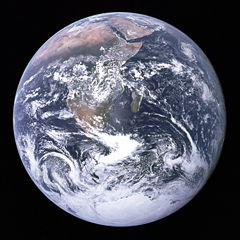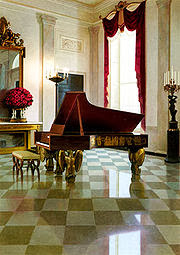21st Century Musical Healer Series--Harping with Kate Kunkel
 |
| Harpist/Healer Kate Kunkel |
As the founder of the Linked In group, Musical Healers, I have experienced the great privilege of meeting the best and brightest sound healers and sound therapists of the 21st Century. Canadian-based harpist Kate Kunkel (Harp Lady), is among those Light Worker musicians who have crossed my path. She has been featured on Shirley Maclaine's radio show and other broadcasts as well as, having several products available in the form of recordings and books.
Kunkel's inspiration story reminds us that each of us has a true calling for how we can serve on the planet, and thus find our healing, transformation, and happiness.
Whole Music
Experience: You went through two major transitional periods which led you to
the work you’re doing with sound therapy. First, while you were dealing with
stress as a business woman, you encountered playing harp in a dream. Then the
second transition took place when you performed music for a last rite of
passage for a man dying from cancer. Could you briefly describe these
situations?
Kate Kunkel: My first transformational experience came as a result of incredible stress. I had a business in Palm Springs, California, that I felt demanded that I keep 12 other individuals (my employees) happy as I built the business. Obviously this was not possible. Consequently, I suffered terrible stress working seven days a week at the business and networking in the evenings to build it.
One night as I returned from yet another networking meeting, I fleetingly considered driving off a bridge. It was only a nanosecond, but I realized that I was in a very bad place. As I lay in bed that night, I prayed for guidance and in a dream that night, I was given what I believe to be divine insight. In that dream, I was playing a harp, and for the first time in my life, I felt peace, and a true sense of purpose. The next morning I began my quest to find and learn the harp. One year later, I walked away from that business and began my true life – as a harpist.
The second transformational experience came when I was playing harp professionally in Las Vegas. I was asked by a friend to play for a man whose cancer treatment options were at an end. I did not realize he was so close to death when I arrived at his home, but was happy to be able to play for him when I arrived. His family said that he was waiting for me, even though it was obvious he was not conscious. But I could feel his presence, and I greeted him and began to play. It was only about 20 minutes from the time I started playing for him that he passed, but in that time, I felt an intense soul connection with him. It was a feeling I cannot adequately express, but I know it was real, and that I felt his spirit leave his body. It was the moment, the second that I knew my destiny. This was why I played the harp--for healing.
WME: You mention on your website that you offer Vibroacoustic Harp therapy. Can you describe this therapy?
KK: Vibroacoustic Harp Therapy (VAHT) is a branch of sound
therapy inspired by vibroacoustic therapy, a 40 year old modality developed by
Olav Skille in Norway. Basically VAT uses sound to produce vibrations that are
applied directly to the body. During the vibroacoustic therapy process, a
client lies on the specially designed mat or bed or sits in a chair that is
embedded with speakers or transducers which transmit specific
computer-generated frequencies into vibrations. In the case of VAHT, which was
developed by Sarajane Williams, I actually play my harp into the amplifier,
which then sends the frequencies of the harp directly into the client. It is an
incredible experience; combining the beautiful tones of the harp with the
powerful resonance of vibroacoustics.
WME: You have several recordings and a book on the healing consciousness of sound available. In the book you go into detail about the sound frequencies in our environment such as leaf blowers, booming stereos, lawn mowers (all my favorite sounds, lol) and the damage caused to us by exposure to those sounds. Then you mention healing frequencies to counteract our daily barrage of noises.
So I’m wondering, do you ask your clients to keep a diary of the noises they’re exposed to and the health effects? I already know how those sounds affect me. And do your CDs act as masking for those sounds, or do clients play those CDs in a quieter environment at a different time to recalibrate their bodily systems?
KK: My CDs are not created to “mask” those sounds. I believe that adding more sound to obnoxious sounds only adds more substance to the obnoxiousness. I do ask clients to pay attention to the feelings they have when they are exposed to different sounds, and encourage them to find a way to eliminate those sounds from their environments. Obviously, that is often not possible, but by acknowledging the noise and understanding that in many cases that is what is causing you to be anxious or irritated, it goes a long way to making it possible to reduce the feelings of anger, irritation, whatever. I invite clients to play my CD or any other soothing music during times when they can pay attention and enjoy/understand/absorb the healing qualities of the music.
WME: I’m fascinated by the article on your website about Codes of Tones which I haven’t encountered previously. You mention that Mozart used the Codes of Tones and that they hail from ancient times.
How did you learn about these tones? What are they? What other musicians have used the tones in their compositions? Are you referring to Solfeggio tones or Sacred Geometry?
KK: No, I am not referring to the Solfeggio tones or Sacred Geometry when discussing the code of tones. I learned about the code from harpist Joel Andrews through his book, A Harp Full of Stars, and the system basically uses a letter/pitch equivalent chart. We know that Haydn used it also, but of course many musicians don’t share the source of their inspiration.
WME: You have joined a global tradition performing the harp. And as you mention on your website, the harp goes back to Biblical times, and I’ll add that the instrument in various guises and forms was performed in medieval West Africa, and I believe ancient Greece. Many of us also associate the harp with angels.
Where do you see the future of harps going? I noticed more and more sound healers are led to the harp.
KK: As a harpist, therapist and teacher, every day I see more and more people drawn to the instrument. Perhaps it is the yearning for peace that we all experience now. When you sit down and play a harp, something changes in you. I believe it is partly the vibration of the instrument against your body, partly the history of it. Surely most of us have heard the many stories in various cultures of the healing power of the harp, so I do believe it elicits a kind of soul memory for many. I know for me that the first time I picked up the harp I felt “I’m home”. As I and many others work to dispel the myth that the harp “is such a difficult instrument”, I hope that more and more people will pick it up and realize that it is very intuitive, and far from being a complicated instrument that only the elite few can master, it is in fact a folk instrument. Given a few moments, anyone can pick out a tune on a harp. I encourage people to do just that, and see where it leads them.
Video explaining VAHT:



Wonderful interview. Harps are the healers to soul. And harpist carry spirit as they play :) thank you for sharing this.
ReplyDeleteThank you. I agree with you in that harps do heal the soul.
ReplyDelete